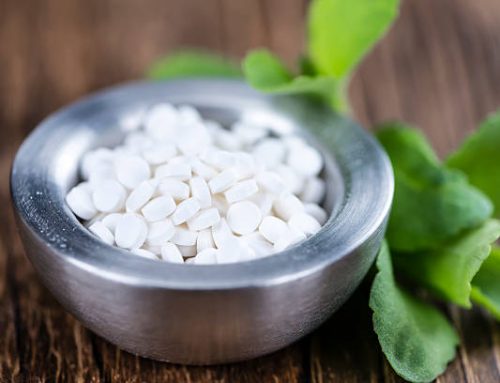Hey there, fellow health enthusiasts! Have you ever heard of the magical powers of Slippery Elm? If your answer is “no,” then you’re in for a treat. Slippery Elm is a tree native to North America, and for centuries, it has been used by Native Americans for its healing properties. But what makes it so special? Keep reading to uncover the soothing secrets of Slippery Elm that will leave you amazed.


One whole fresh green plant elm branch with rib leaves isolated on white
1. Smooth as Silk: Discover the
Have you ever heard of slippery elm? No, it’s not a new dance move or a kind of sushi. It’s actually a type of tree native to North America, and its inner bark has been used for centuries by Native Americans as a natural remedy for a variety of ailments.
So, what’s so special about slippery elm? Well, for one, it’s incredibly soothing for the digestive system. If you suffer from heartburn, acid reflux, or other digestive issues, slippery elm can help calm and coat your stomach and esophagus, providing relief from discomfort and irritation.
But that’s not all. Slippery elm also has anti-inflammatory properties, which can help ease sore throats, coughs, and other respiratory problems. It’s even been used topically to soothe skin irritations and rashes.
So, how can you enjoy the benefits of slippery elm? One option is to take it in supplement form – you can find slippery elm capsules or powders at most health food stores. Another option is to make a tea using slippery elm bark powder (just be sure to buy from a reputable source). Simply mix a spoonful of the powder with hot water, let it steep for a few minutes, and enjoy.
If you’re feeling adventurous, you can even try adding slippery elm to your favorite smoothies or other recipes. Its mild, slightly sweet flavor pairs well with fruit and nut milks, making it a versatile ingredient in your kitchen.
- Anti-inflammatory properties
- Soothing for digestive system
- Relief from heartburn, acid reflux, or other digestive issues
- Soothes sore throats, coughs, and other respiratory problems
- Topically soothes skin irritations and rashes
So, next time you’re looking for a natural way to support your health and wellness, consider giving slippery elm a try. Your digestive system (and taste buds) will thank you!
2. Slippery Elm: The Natural Remedy for All Your Digestive Woes
What is Slippery Elm?
Slippery Elm, also known as Ulmus rubra, is a type of tree native to North America. The inner bark of the tree has been used for centuries by Native Americans for its medicinal properties. The bark is harvested by stripping the outer bark from the tree, leaving the smooth, stringy inner bark exposed.
How does Slippery Elm work?
The active ingredient in Slippery Elm is a type of soluble fiber called mucilage. When mixed with water, mucilage forms a gel-like substance that coats the lining of the digestive tract, soothing and protecting it from irritation. This can be especially helpful for people suffering from conditions like gastritis, acid reflux, and inflammatory bowel disease.
What are the benefits of Slippery Elm?
- Relieves Constipation: Slippery Elm can help promote regular bowel movements by increasing the bulk of the stool and lubricating the intestinal walls.
- Reduces Inflammation: The mucilage in Slippery Elm has been shown to reduce inflammation in the gut, which may help alleviate symptoms of conditions like Crohn’s disease and ulcerative colitis.
- Soothes Sore Throat: The mucilage in Slippery Elm can also be soothing for a sore throat. It is often added to throat lozenges and cough drops.
- Helps with Heartburn: Slippery Elm can help neutralize stomach acid, making it a natural remedy for heartburn and acid reflux.
How to use Slippery Elm?
Slippery Elm comes in a variety of forms, including capsules, teas, and lozenges. It can also be purchased in bulk as a powder. To make a tea, mix 1-2 teaspoons of Slippery Elm powder with boiling water and let steep for 10-15 minutes. Drink up to three cups of tea per day for maximum benefits.
Conclusion
Slippery Elm is a versatile natural remedy that can help alleviate a variety of digestive woes. Whether you suffer from constipation, inflammation, or acid reflux, Slippery Elm may be the solution you’ve been looking for. So next time you’re experiencing digestive discomfort, give Slippery Elm a try!
3. Say Goodbye to Tummy Troubles with Slippery Elm’s Calming Properties
Slippery Elm is a natural remedy that can help prevent and soothe stomach discomfort. Native Americans have long used the inner bark of the Slippery Elm tree as a medicine to ease various digestive problems, such as diarrhea, constipation, and bloating. Slippery Elm contains mucilage, which becomes gel-like when mixed with water. This viscous substance coats the lining of the stomach and intestines, soothing inflammation and reducing irritation.
Here are some specific ways how Slippery Elm can calm your tummy troubles:
- Relieves heartburn and acid reflux: Slippery Elm creates a protective layer over the esophagus, preventing the stomach acid from irritating it. It also neutralizes excess stomach acid, reducing the burning sensation.
- Alleviates diarrhea and irritable bowel syndrome (IBS): Slippery Elm absorbs excess water in the gut, bulks up the stools, and slows down transit time, easing diarrhea and restoring regularity. It also soothes inflammation in the intestinal walls, easing cramps, bloating, and gas.
- Treats ulcers and gastritis: Slippery Elm encourages the production of mucus in the stomach, which helps to protect the lining from further erosion. It may also prevent the attachment of harmful bacteria like H. pylori to the stomach walls.
- Boosts immune function: Slippery Elm contains antioxidants and anti-inflammatory compounds that can help support the immune system and reduce the risk of infections.
To consume Slippery Elm, you can either make a tea, take it in capsules, or use it as a powder. One simple way to make a tea is to mix the powder with hot water until it becomes smooth and drinkable. You can sweeten it with honey or add some ginger or cinnamon for extra flavor. It’s best to take Slippery Elm before meals or between meals, as it may interfere with the absorption of nutrients if taken with food.
In conclusion, Slippery Elm is a gentle yet potent herb that can help you say goodbye to tummy troubles. It can be a safe and effective alternative to over-the-counter medications, which may have side effects. Consult with your healthcare provider before using Slippery Elm if you’re pregnant, breastfeeding, or taking any medications. Enjoy a healthy digestive system with Slippery Elm‘s calming properties!
4. From Heartburn to Constipation: How Slippery Elm Can Help You Feel Better
Do you suffer from digestive problems such as heartburn, bloating, or constipation? If so, you might want to give slippery elm a try! This natural remedy has been used for centuries to soothe the digestive tract and relieve symptoms associated with various gastrointestinal disorders.
The Benefits of Slippery Elm
Slippery elm is a tree native to North America, and its inner bark contains a substance called mucilage, which can coat and protect the lining of the digestive system. Here are some of the ways in which slippery elm can improve your digestive health:
- Relieves heartburn and acid reflux: Slippery elm can help to neutralize stomach acid and reduce inflammation in the esophagus.
- Soothes constipation: The mucilage in slippery elm can act as a natural laxative, helping to soften stools and make them easier to pass.
- Alleviates diarrhea: Slippery elm can help to absorb excess water in the digestive tract and reduce inflammation, making it useful for treating diarrhea.
- Reduces bloating and gas: Slippery elm can help to reduce inflammation in the gut, which can alleviate symptoms of bloating and gas.
How to Use Slippery Elm
Slippery elm can be consumed in a variety of forms, including capsules, teas, and powders. Here are some tips for using slippery elm to improve your digestive health:
- Capsules: Take 400-500mg of slippery elm capsules three times per day, with meals or as directed by your healthcare provider.
- Tea: Steep 1-2 teaspoons of slippery elm powder in hot water for 3-5 minutes, then drink up to three times per day.
- Powder: Mix 1-2 teaspoons of slippery elm powder with water or juice, and drink up to three times per day.
When using slippery elm, it’s important to drink plenty of fluids to prevent dehydration. You should also talk to your healthcare provider before using slippery elm if you are pregnant, breastfeeding, or taking any medications.
Conclusion
Slippery elm is a natural, effective way to improve your digestive health and alleviate symptoms of gastric distress. Whether you suffer from heartburn, constipation, or other digestive problems, adding slippery elm to your diet and supplement regimen can help you feel better and live more comfortably.
5. Slippery Elm: The Miracle Herb that Can Ease Your Stomach and Heal Your Body!
Have you ever heard of Slippery Elm? This herb is known for its many health benefits and has been used for centuries in traditional medicine for various illnesses. Slippery Elm is a miracle herb that can ease your stomach and heal your body!
What is Slippery Elm?
Slippery Elm, also known as Ulmus Americana, is a tree native to North America. Its bark is rich in mucilage, a sticky substance that becomes gel-like when it mixes with water. The mucilage in Slippery Elm gives it its soothing properties and makes it an effective remedy for many health issues.
What are the Health Benefits of Slippery Elm?
Slippery Elm has been shown to have many health benefits, such as:
- Relieving Digestive Issues: Slippery Elm can soothe and coat the digestive tract, reducing inflammation and irritation. It can also help with conditions such as acidity, ulcers, colitis, and irritable bowel syndrome (IBS).
- Reducing Cough and Sore Throat: Slippery Elm has mild antitussive properties and is an effective remedy for coughs and sore throats. It can soothe the throat and reduce inflammation.
- Boosting Immunity: Slippery Elm contains antioxidants that help to protect the body from free radicals that can cause cell damage. It can also help to boost the immune system.
- Reducing Skin Irritation: The anti-inflammatory properties of Slippery Elm can help to reduce redness, itching, and rashes on the skin. It can also help to soothe and protect the skin.
How to Use Slippery Elm?
Slippery Elm can be consumed in many forms, such as capsules, teas, or lozenges. It can also be used as a powder or mixed with water to make a smoothie. It is always recommended to consult with a healthcare professional before consuming any new supplement or herb.
Conclusion
Slippery Elm is a fantastic herb that has been shown to have many health benefits. It can help to ease digestive issues, reduce cough and sore throat, boost immunity, and reduce skin irritation. With all of these benefits, Slippery Elm is definitely worth considering for your health and wellness routine.
In conclusion, slippery elm is an incredible herb that provides various health benefits. It is easy to access and use, making it a go-to herb for people seeking natural remedies. Whether you have digestive issues, dry skin, or sore throat, slippery elm has got you covered. Try adding it to your diet or medicine cabinet and see the magic for yourself.
FAQ:
Here are some frequently asked questions about slippery elm:
– Is slippery elm safe for children?
Yes, slippery elm is safe for children. It is gentle on the stomach and can ease symptoms of common ailments like coughs, diarrhea, and indigestion. However, it’s always recommended to consult with a healthcare practitioner before giving any new herbs or supplements to children.
– Can slippery elm cure GERD?
Slippery elm can help relieve symptoms of GERD by coating and soothing the digestive tract. However, it is not a cure for GERD. If you have GERD, it’s essential to seek medical advice and follow the recommended treatment plan.
– Does slippery elm have side effects?
Slippery elm is generally safe and well-tolerated. However, some people may experience stomach discomfort, nausea, or diarrhea. If you experience any adverse effects, stop using it and consult your doctor.
– How should I take slippery elm?
Slippery elm can be taken in various forms, including capsules, tea, powder, or lozenges. Follow the instructions on the product label or consult with a healthcare practitioner for the recommended dosage.
– Where can I buy slippery elm?
Slippery elm is widely available in health food stores, herbal shops, and online retailers. Ensure that you purchase it from a reputable source and check the expiration date before using it.




